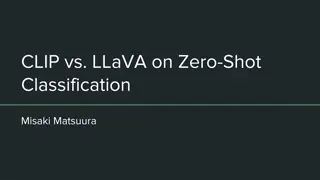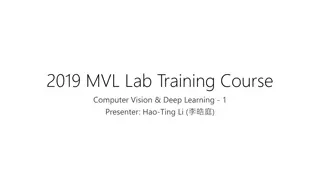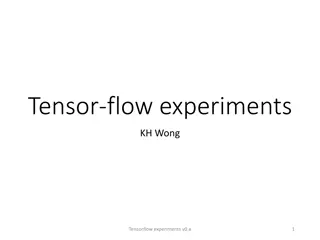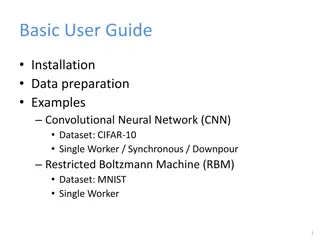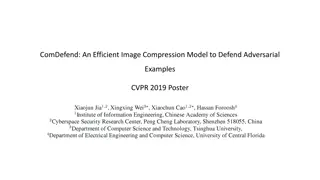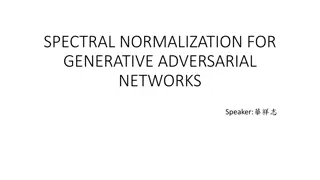Comparing CLIP vs. LLaVA on Zero-Shot Classification by Misaki Matsuura
In this study by Misaki Matsuura, the effectiveness of CLIP (contrastive language-image pre-training) and LLaVA (large language-and-vision assistant) on zero-shot classification is explored. CLIP, with 63 million parameters, retrieves textual labels based on internet image-text pairs. On the other h
0 views • 6 slides
Image Classification in Computer Vision
Image Classification is a crucial task in Computer Vision where images are assigned single or multiple labels based on their content. The process involves training a classifier on a labeled dataset, evaluating its predictions, and using algorithms like Nearest Neighbor Classifier. Challenges and the
0 views • 16 slides
Overview of TensorFlow Experiments and Tutorials
Explore TensorFlow experiments including tutorials for image recognition tasks like MNIST OCR, object recognition, and more. Learn to install TensorFlow, use GPU models like GTX1070, and access useful links. Discover specific installation steps for Windows 10 with Anaconda to optimize performance. T
0 views • 15 slides
Guide to Setting Up Neural Network Models with CIFAR-10 and RBM Datasets
Learn how to install Apache Singa, prepare data using SINGA recognizable records, and convert programs for DataShard for efficient handling of CIFAR-10 and MNIST datasets. Explore examples on creating shards, generating records, and implementing CNN layers for effective deep learning.
0 views • 23 slides
Efficient Image Compression Model to Defend Adversarial Examples
ComDefend presents an innovative approach in the field of computer vision with its efficient image compression model aimed at defending against adversarial examples. By employing an end-to-end image compression model, ComDefend extracts and downscales features to enhance the robustness of neural net
0 views • 16 slides
Spectral Normalization for Generative Adversarial Networks
Spectral normalization is a technique used in Generative Adversarial Networks (GANs) to address issues like non-convergence, mode collapse, and gradient problems. By normalizing the spectral norm of weight matrices, SN helps stabilize training and improve quality. Explore the benefits and applicatio
0 views • 22 slides
